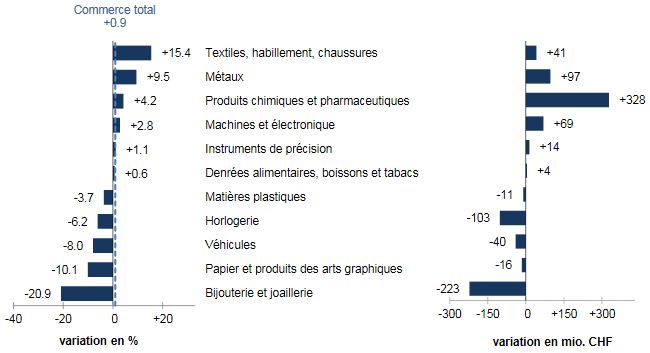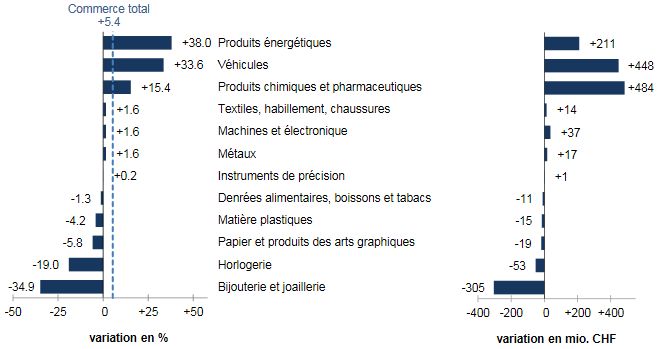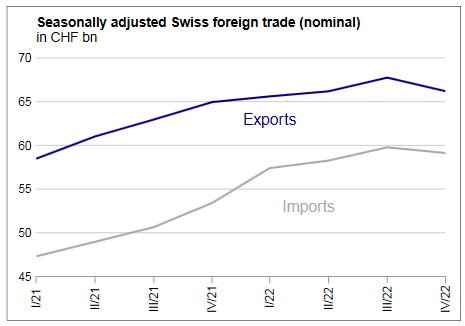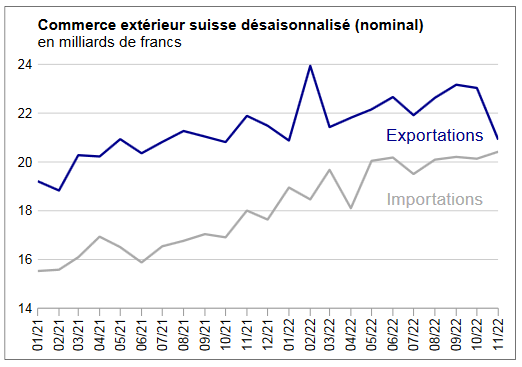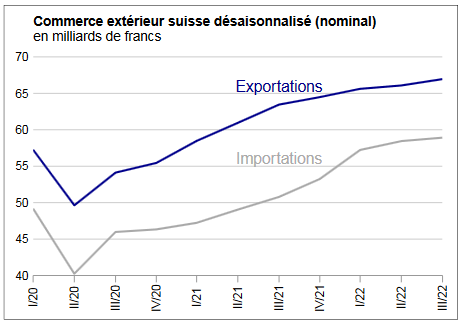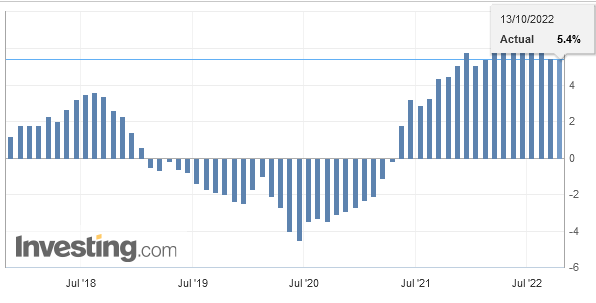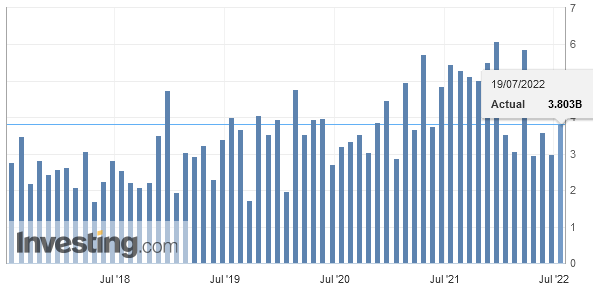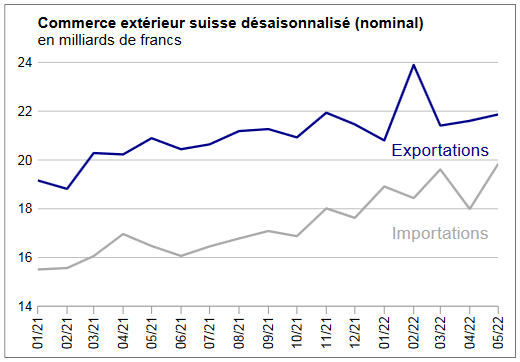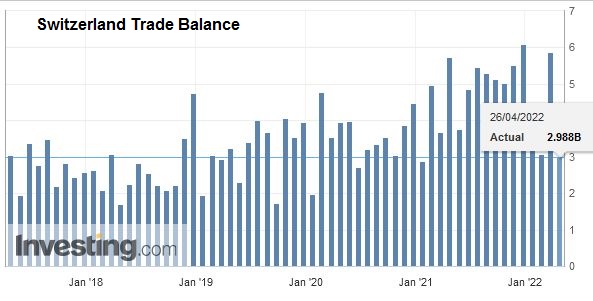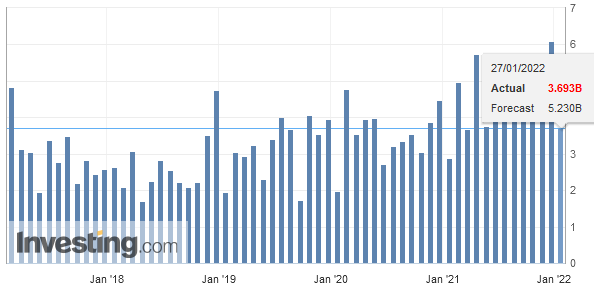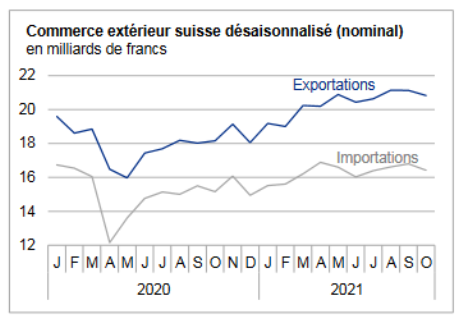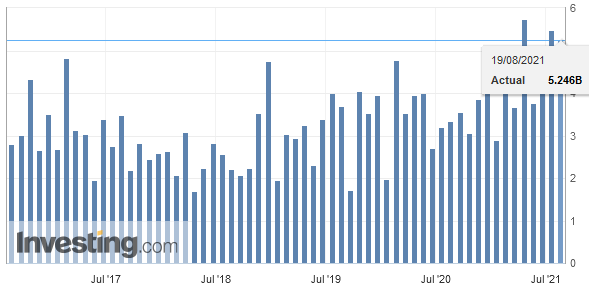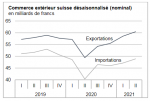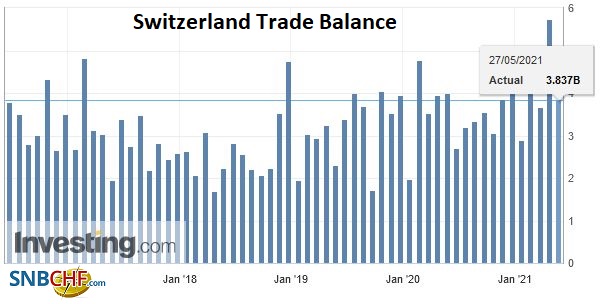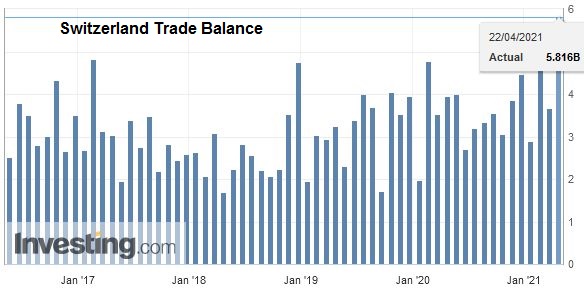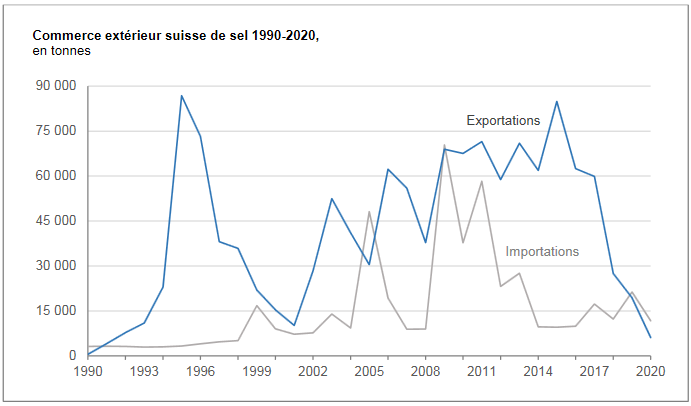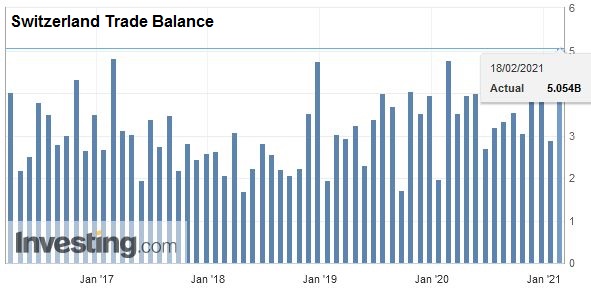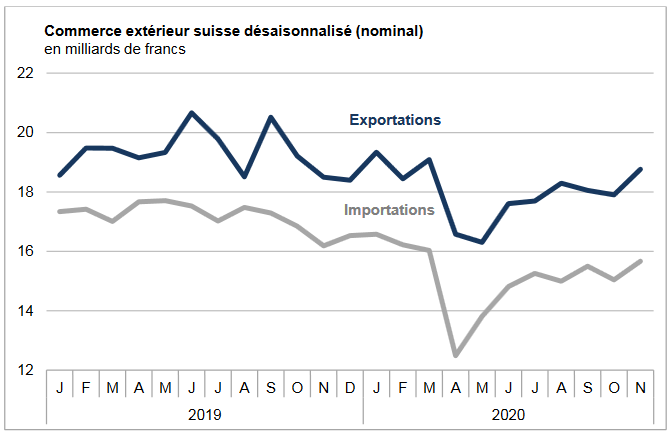We do not like Purchasing Power or Real Effective Exchange Rate (REER) as measurement for currencies. For us, the trade balance decides if a currency is overvalued. Only the trade balance can express productivity increases, while REER assumes constant productivity in comparison to trade partners.
On the other side, a rising trade surplus may also be caused by a higher savings rate while the trade partners decided to spend more. Recently Europeans started to increase their savings rate, while Americans reduced it. This has led to a rising trade and current surplus for the Europeans.
To control the trade balance against this “savings effect”, economists may look at imports. When imports are rising at the same pace as GDP or consumption, then there is no such “savings effect”.
After the record trade surpluses, the Swiss economy may have turned around: consumption and imports are finally rising more than in 2015 and early 2016.
Swiss National Bank wants to keep non-profitable sectors alive
Swiss exports are moving more and more toward higher value sectors: away from watches, jewelry and manufacturing towards chemicals and pharmaceuticals. With currency interventions, the SNB is trying to keep sectors alive, that would not survive without interventions.
At the same time, importers keep the currency gains of imported goods and return little to the consumer. This tendency is accentuated by the SNB, that makes the franc weaker.
Texts and Charts from the Swiss customs data release (translated from French).
Exports and Imports YoY DevelopmentIn February 2017, Swiss foreign trade progressed in both directions of traffic. Exports adjusted for the number of working days increased by 0.9% (real: -2.5%). Driven by three groups, imports grew more (+5.4%, real: -1.2%). The trade balance loops with a surplus of 3.3 billion francs. In short ▲ Metal exports: highest level since November 2010 ▲ Imports: energy products, chemicals – pharmaceuticals and vehicles alone generated an increase of 1.1 billion Swiss francs ▼ Jewelry weaker in both ▼ Exports: Increasing surplus with the United States |
Swiss exports and imports, seasonally adjusted (in bn CHF), Feb 2017(see more posts on Switzerland Exports, Switzerland Imports, )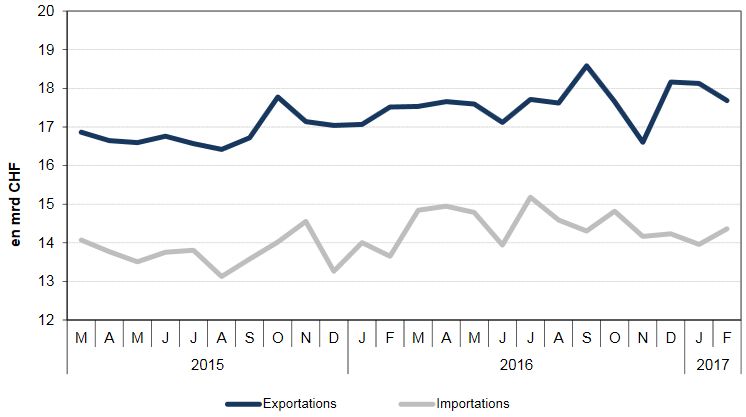 Source: Swiss Customs - Click to enlarge |
Overall EvolutionIn February 2017, exports adjusted for working days increased by 0.9% over one year (real: -2.5%). On one month (seasonally adjusted), they contracted by 2.5%. Despite this, the positive trend has continued, albeit at a slower pace. Imports increased by 5.4% per year (real: -1.2%). After de – marking, they were up 2.9% from January (real: +2.9%). They have reached a higher level over the last four months. |
Switzerland Trade Balance, February 2017(see more posts on Switzerland Trade Balance, )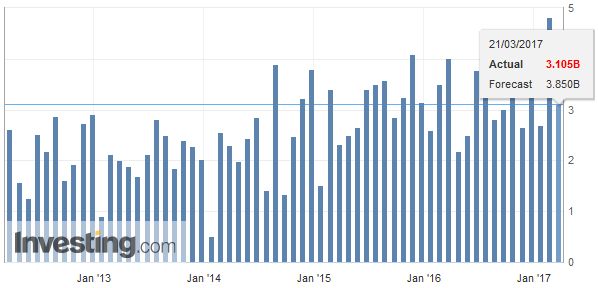 Source: Investing.com - Click to enlarge |
Exports: chemicals – pharma offset the weakening of watchmaking and jewelry
|
Swiss Exports per Sector February 2017 vs. 2016(see more posts on Switzerland Exports, Switzerland Exports by Sector, ) |
Imports of airliners at a high levelIn February 2017, imports by commodity group fluctuated. Energy products (+38%, mainly price effects), vehicles (+34%) and chemicals and pharmaceuticals (+15%) were the most dynamic. These three groups alone generated an increase of 1 billion francs. Conversely, jewelry suffered a heavy setback (-35%, -305 million francs). |
Swiss Imports per Sector February 2017 vs. 2016(see more posts on Switzerland Imports, Switzerland Imports by Sector, ) |
Full story here Are you the author? Previous post See more for Next post
Tags: newslettersent,Switzerland Exports,Switzerland Exports by Sector,Switzerland Imports,Switzerland Imports by Sector,Switzerland Trade Balance










